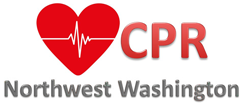As one of the best CPR Tacoma and Healthcare Provider BLS Tacoma training centers (and the entire Puget Sound area), classes are available six days a week at our training center.
If you are searching for CPR classes Tacoma or South Sound area, CPR Northwest Washington is your one stop shop for CPR classes Tacoma, we even offer an adult, child and infant CPR class in the greater Tacoma area. If you are a business interested in an “on-site” training center for CPR Tacoma training and certification in Tacoma, then check out our Tacoma area classes to see if you qualify for a 10% discount towards your “on-site” CPR Tacoma training in the greater Tacoma area.
What is CPR
The single most important organ in the human body is arguably the heart. Your heart is the “center piece” to the cardiovascular system. The cardiovascular system is responsible for providing the “highway” or the “pipes” (otherwise known as your blood vessels) that delivers Oxygen and nutrients to every cell in the body to keep them alive. When someone’s blood flow or breathing stops, seconds count. Permanent brain damage or death can happen quickly. If you know how to perform cardiopulmonary resuscitation (CPR), you could save a life. CPR is an emergency procedure for a person whose heart has stopped or is no longer breathing. CPR can maintain circulation and breathing until emergency medical help arrives.
Even if you haven’t had training, you can do “hands-only” CPR for An Adult, Child or Infant whose heart has stopped beating. “Hands only” or “Compression only” CPR is simple to use. You ask someone to call 911 and bring back an AED and then press hard and fast in the center of the chest. “Hands-only” CPR uses chest compressions to keep blood circulating until emergency help arrives. If you’ve had training, you can use chest compressions, clear the airway, and do rescue breathing. Rescue breathing helps get oxygen to the lungs for a person who has stopped breathing. To keep your skills up, you should repeat the training every two years.
Why learn CPR
Cardiopulmonary resuscitation (CPR) is a lifesaving technique that can make the difference between life and death and is very helpful in many emergencies where the person can not respond, isn’t breathing or has no pulse. This situation can occur for many reasons including a heart attack or near drowning, in which someone’s breathing or heartbeat has stopped. The American Heart Association recommends that everyone — untrained bystanders and medical personnel alike — begin CPR with chest compressions, because chest compressions are the most important part of performing CPR after you make sure it is safe to help the victim and you have launched the Emergency Medical System (EMS).
When a person is down and not responsive, has no breathing or pulse, it is easy for people to not know what to do, which is why getting trained and certified in CPR at CPR Northwest Washington is a great idea for those living anywhere near the Tacoma area. Even if you have no formal CPR training in or around CPR Tacoma, It’s far better to do something, (hands only or compression only CPR and launch the Emergency Medical System (EMS), than to do nothing at all. if you’re afraid that your knowledge or abilities aren’t 100 percent complete and updated with the newest 2015 American Heart Association Protocols, that’s the best reason to take a recertification class at CPR Northwest Washington which serves the CPR Tacoma needs. Remember, the difference between your attempting CPR and launching the Emergency Medical System (EMS), and doing nothing could be someone’s life.
Here’s advice from the American Heart Association:
If you are a person who is not trained in CPR, then provide hands-only CPR or “compression only” CPR. That means continuous chest compressions at a rate of between 100 to 120 a minute until paramedics arrive the person becomes responsive. You don’t need to try rescue breathing.
Trained and ready to go. If you’re well-trained and confident in your ability, check to see if there is a pulse and breathing. If there is no breathing or a pulse within 10 seconds, begin chest compressions. Start CPR with 30 chest compressions before giving two rescue breaths.
Trained but rusty. If you’ve previously received CPR training but you’re not confident in your abilities, then just do chest compressions at a rate of 100 to 120 a minute.
